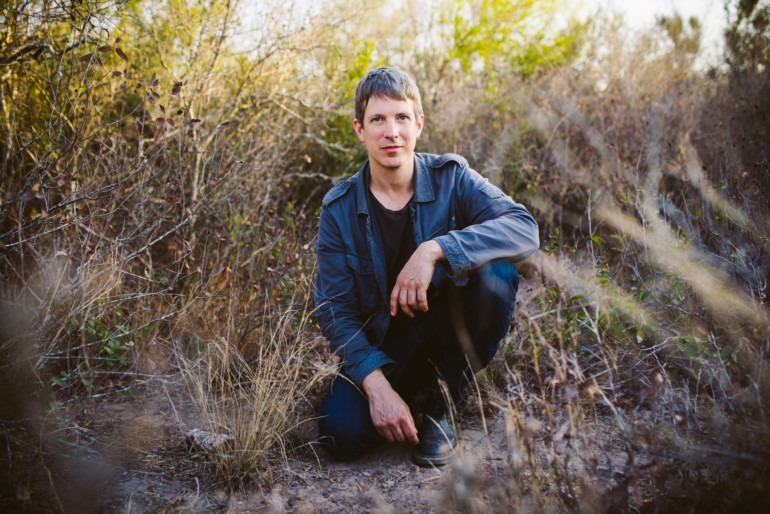When Jonathan Meiburg received a fellowship to visit the Falkland Islands 25 years ago, he didn’t expect he would meet an animal that would change his life. But while there he encountered a species of handsome, incredibly social and oddly crow-like falcon that Charles Darwin had first come across in 1833. The birds were so insatiably curious that they stole hats, compasses and other valuables, and the naturalist described them as: “tame and inquisitive… quarrelsome and passionate.”
A Most Remarkable Creature follows Meiburg’s travels through South America in search of this unique bird, the rare striated caracara. A hybrid of science writing, travelogue and biography, it’s an in-depth, fascinating account of a uniquely intelligent animal. It’s also an epic journey through South America, from the fog-bound coasts of Tierra del Fuego to the tropical forests of Guyana.
Jonathan Meiburg has written reviews, features, and interviews for print and online publications including The Believer, The Talkhouse, and The Appendix, and is best known as the leader of the band Shearwater.
We caught up with Meiburg to hear more about his experience of getting to know this strange and wonderful bird:
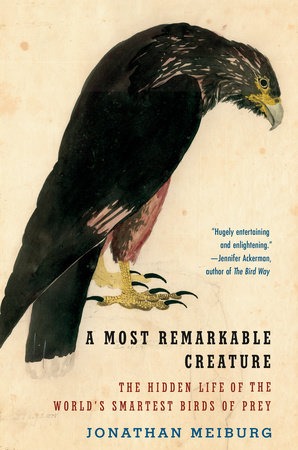
Tell us about your relationship with birds and how you came to study them? Did this come about through your fellowship or is this something you’ve always been fascinated by?
They came to me. The 21-year-old version of me liked nature in a general way, but I didn’t have any special interest in birds until I first met striated caracaras in the Falklands. It’s not every day that a trio of weird falcons that look like a cross between a hawk and a crow run up to you and stare you down! I was amazed at how bold and forthright they were, and how conscious they seemed, for want of a better word.
I wasn’t wrong about that; caracaras might be obscure, but I suspect they’re among the world’s brainiest animals. In the book I describe a falconer in England who kept one for almost 30 years, and fondly called her “the most intelligent bird in the world”; he’d designed a series of devices to test her ability to recognize abstract categories like color and shape, and she knew a set of stuffed animals by name.
What do you think most intrigued you so about caracaras?
I think their curiosity sparked mine. Caracaras — and striateds in particular — are drawn to anything they haven’t encountered before, and have to say I’ve never felt so completely seen by another animal. That might sound a bit mystical, but you’d probably feel the same if I put one in front of you, and for good reason: caracaras are members of the falcon family, like peregrines or kestrels — but unlike their northern cousins, they tend to be scavengers and generalists, so their minds are more like ours. They’re curious, clever, and very good at identifying new and unusual sources of food.
The 10 caracara species that live throughout South America have mastered all of their environments — from the high deserts of the Andes, where mountain caracaras’ feathers adorned the crowns of the Inca emperors, to the tropical forests of the Amazon, where red-throated caracaras live in large groups, almost like troops of monkeys, and survive by preying on wasps’ nests.
Despite all this, scientists from the northern world pay less attention to caracaras than to other birds of prey. Darwin was probably being tongue-in-cheek when he called them “false eagles” who “ill become so high a rank,” but even now I think there’s still a sense that caracaras just aren’t what self-respecting birds of prey ought to be. It’s true that they’re not much like peregrine falcons, or golden eagles; they’re more like winged raccoons.
One of my book’s main human characters, the 19th century naturalist and writer William Henry Hudson, said as much about the small, dusty-brown caracaras called chimangos he grew up with in the Argentine Pampas. “A species so cosmopolitan in its habits would have a whole volume to itself in England,” he wrote; “being only a poor foreigner, it has had no more than a few unfriendly paragraphs bestowed upon it.” I like imagining that the birds I met in the Falklands were asking me to tell their story.
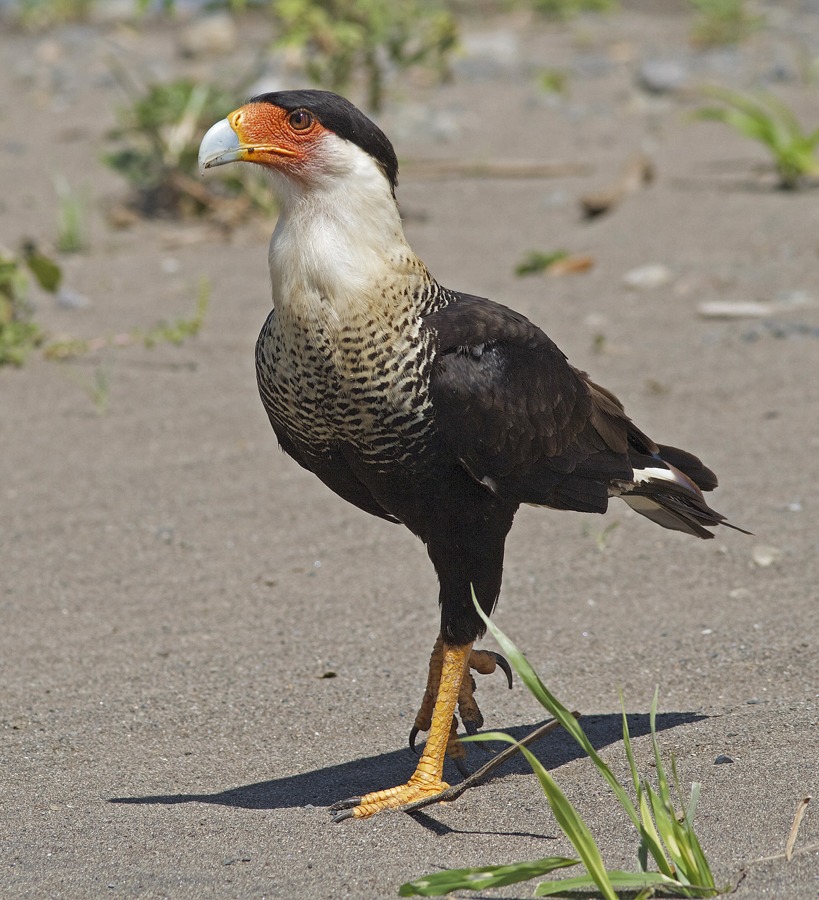
When you wrote the book, did you to intend it to be part travelogue, part science and natural history book, or did it evolve this way as you wrote it?
It took me almost 25 years to really understand what the caracaras had to tell me, and I wanted to write a book as entertaining and surprising to read as it was for me to discover. Following the lives of the caracaras and the people who live with them took me on a journey across thousands of miles and millions of years. I wanted the reader to start from where I started — at zero — and invite them along for the ride.
That meant writing some stretches of pure natural history, of course, but those are there to provide context for the parts where you’re with me on the ground. The section that’s set in southern Guyana might be my favorite: I ascend a small, wild river into one of the most remote parts of tropical South America with three Amerindian guides and a Canadian scientist. We’re looking for caracaras, but the entire trip is just as important: it’s full of astonishing images, people, and creatures, and you’re right there with us. By the time I finished the book, I felt I’d arrived at a better understanding of how our world came to be — and a humbling sense of how much we still don’t know about it. If you come away from it wanting to learn more, then I’ve done my job.
You talk about Darwin’s voyage and his interaction with caracaras in the book. What do these birds teach us about evolution?
Darwin was almost as taken with them as I was. He writes more about caracaras in The Voyage of the Beagle than he does about the birds of the Galápagos, and notes that they play the same roles in mainland South America that crows, ravens, and magpies do in Europe — “a tribe of birds well distributed over the rest of the world,” he notes, “but entirely absent in South America.” Strictly speaking, that isn’t true — there are a few tropical jays in South America — but his larger point holds: there are no big, black crows in South America, and caracaras seemed to have filled that niche instead.
But the striated caracaras he met in the Falklands took the cake. He called them “tame and inquisitive,” and he watched them steal valuables from the crew of the Beagle, from a large black hat to “a small kater’s compass in a red morocco leather case, which was never recovered.” Darwin wondered why these curious birds lived only in a remote corner of the world, and nowhere else, and this wasn’t a trivial question for him: the puzzling distribution of living things helped lead him to his insights about the origins of species. I think his time in the Falklands primed him for his experiences in the Galápagos, but he set the riddle of the caracaras aside — so you might say that this book came from tugging at one of Darwin’s loose ends.
In a more modern sense, I think the caracaras pose interesting questions about the evolution of the qualities we might call “intelligence” — by which we usually mean a mind like ours, since we cherish our generally human-centric view of the world. DNA evidence has revealed that falcons are more closely related to parrots than to other birds of prey, and parrots are certainly “brainy” birds — they have strong social bonds, they’re curious they understand abstract concepts like number, color, “self” and “other”; they can even project their minds forward and backward in time. We tend to look at them and see a very “advanced” creature.
But the hunting falcons we’re more familiar with in the northern world are part of a lineage that seems to have given up the opportunism, curiosity, and sociality that the caracaras’ lineage retained — and if that’s true, it’s a reminder that evolution only preserves intelligence as long as it’s useful, not because it’s an end in itself. But I’m going out on a limb here: maybe a graduate student somewhere will take the bait, and do the genetic and physiological work it would take to see if that’s really true! Regardless, there’s been a lot of exciting behavioral research with parrots and crows in recent years, and I hope this book encourages some researchers to take a chance on some less famous but equally fascinating birds.
Are caracaras endangered? What do we have to learn from caracaras in terms of sustainability and our relationship with nature?
Only the striateds have a really small population — the last estimate was about 2500 adult birds, which puts them in a league with giant pandas, and they live only in the Falklands and a few islands near Tierra del Fuego. The other nine species have larger ranges and populations, though the tropical caracaras face the same risks as other living things that depend on South America’s rainforests. The caracaras that have learned to take advantage of us seem to be doing pretty well, in a general sense — and the striking birds called northern crested caracaras may even be increasing their range. The first one ever seen in New York State turned up just a few years ago, and they’ve been spotted as far north as Nova Scotia and Seattle.
I think they offer a lesson in the value of adaptability in times of great change. There used to be a lot more scavengers of all kinds in the Americas until about ten thousand years ago, when most of our largest animals went extinct, and the scavengers that survived to the present day are the ones who were able to tune their lives to the demands and opportunities of a changed world. At the La Brea museum in Los Angeles, there’s a mural of downtown LA as it looked 10,000 years ago: a teeming landscape of giant ground sloths, mammoths, saber-toothed cats, dire wolves, American camels, and other strange beasts. But if you look carefully in the lower right-hand corner, there’s also a caracara. The giants are gone, but they’re still here.
Jonathan Meiburg will appear at Book Passage in a virtual event on March 1 at 5:30 p.m.
More Great New Reads
Reviews by Paula Farmer from Book Passage.
The Nature of Fragile Things, Susan Meissner
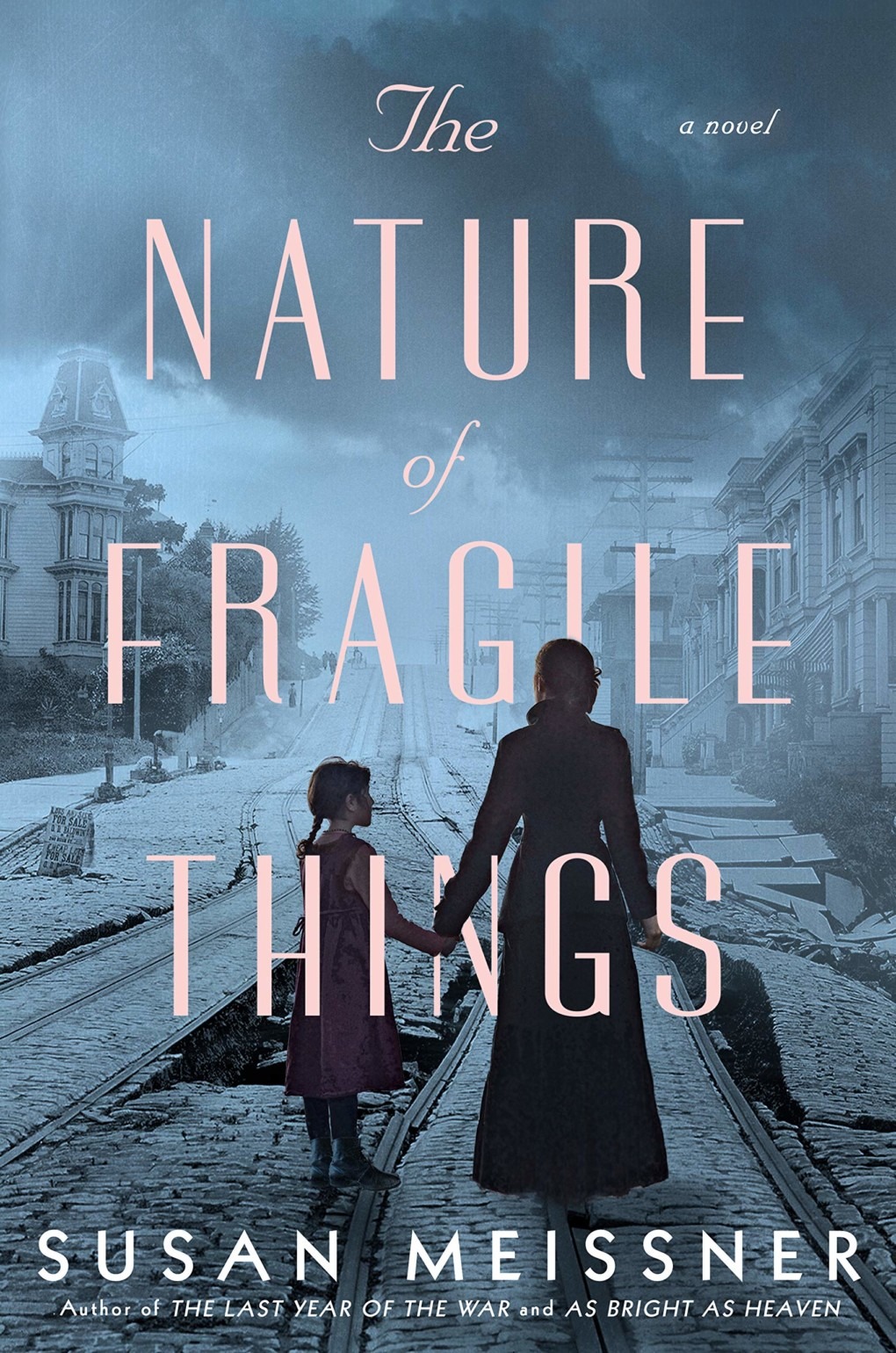
Sophie Whalen is a young Irish immigrant so desperate to get out of a New York tenement that she answers a mail-order bride ad and agrees to marry a man she knows nothing about, San Francisco widower Martin Hocking. He proves to be as aloof as he is mesmerizingly handsome. Sophie quickly develops deep affection for Kat, Martin’s silent five-year-old daughter, but her husband’s odd behavior leaves her with the uneasy feeling that something isn’t quite right. Then, one early spring evening, a stranger at the door sets in motion a transformational chain of events, when Sophie discover’s her husband’s hidden ties to two other women. The fates of these three women intertwine on the eve of the devastating earthquake, thrusting them onto a perilous journey that will test their resiliency and resolve and, ultimately, their belief that love can overcome fear.
Susan Meissner is the former managing editor of a weekly newspaper, an award-winning columnist, and the award-winning author of The Last Year of the War, As Bright as Heaven and A Bridge Across the Ocean, among other novels.
Susan Meissner will appear at the Ferry Building Book Passage on March 13 at 2:00 p.m.
A Sunlit Weapon, Jacqueline Winspear
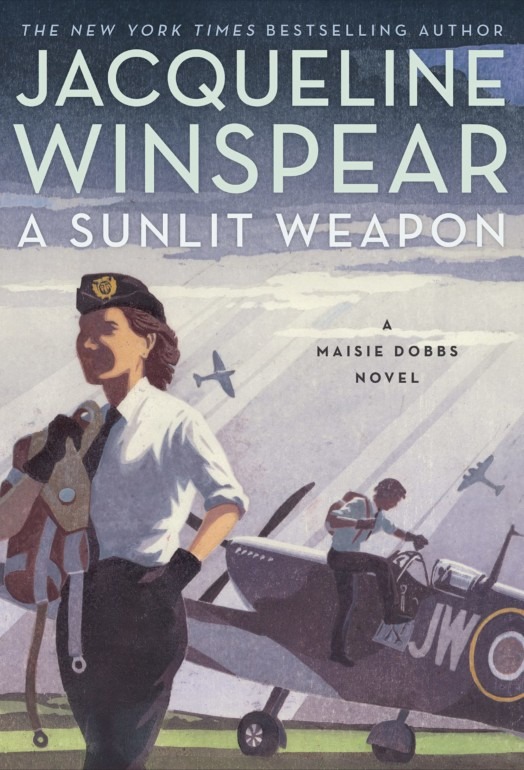
It’s October 1942, and Jo Hardy, a 22-year-old ferry pilot, is delivering a Supermarine Spitfire — the fastest fighter aircraft in the world — to Biggin Hill Aerodrome, when she realizes someone is shooting at her aircraft. Tragedy strikes two days later, when another ferry pilot crashes in the same area. At the suggestion of one of her colleagues, Jo seeks the help of psychologist and investigator Maisie Dobbs. To guarantee the safety of the First Lady — and of the soldier being held in police custody — Maisie must uncover that connection. At the same time, she faces difficulties with her young daughter, Anna, who is experiencing wartime struggles of her own.
Jacqueline Winspear is the author of the New York Times bestsellers The American Agent, To Die but Once, and In This Grave Hour, as well as 13 other bestselling Maisie Dobbs novels. She has also published two non-fiction books, What Would Maisie Do? and a memoir, This Time Next Year We’ll Be Laughing. Originally from the United Kingdom, Jacqueline divides her time between California and the Pacific Northwest.
Jacqueline Winspear will appear in a Book Passage virtual event on March 22 at 5:30 p.m.
For more on Marin:
- The 44th Mill Valley Film Festival Reached 12,000 Students, Teachers — Make It Better Foundation Donates $10K to CFI’s Education Program
- Three Top Animal Sanctuaries Create New Scholarship Program to Help Young Animal Welfare Leaders Pursue Careers in Ag
- Stories of Survival: Isabel Allende’s Latest Novel, “Violeta”, Set During the Time of the Spanish Flu

Jessica Gliddon is the Senior Digital Editor for Make It Better Media Group. An international writer and editor, she has worked on publications in the UK, Dubai and Cape Town. She is a graduate of UC Santa Cruz, and is the former editor of Abu Dhabi’s airline magazine, Etihad Inflight. When she’s not checking out the latest exhibit at SFMOMA or searching out the best places to eat and drink near her home in San Francisco, she volunteers at the Marine Mammal Center in Sausalito.

